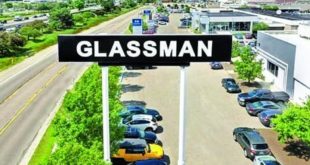One of digital retailing’s greatest challenges is translating a subprime buying experience online. Customers who use the platforms without assistance are less likely to receive auto lender approval. But retail technology experts say that changes leading up to and during the coronavirus pandemic have simplified the process for subprime buyers.
The idea that digital retailing tools can only be used by customers in prime credit tiers and above is a myth, one that largely has been dispelled by the pandemic-driven uptick in the use of the technologies, according to Emil Banga, associate vice president of operations at Dealertrack. Lack of process at the dealership level is partly why car deals that started online mostly fell flat for nonprime shoppers.
“The dealership really never had a process of what to do when that data came in to those nonprime customers,” he said.
More online traffic and remote and digital transactions prompted changes at the store level to better handle these deals. During the pandemic, dealerships are responding more rapidly to Internet leads and partially processed online transactions, Banga said. Employees promptly conduct identity verifications, he said, and if a customer’s credit falls below a certain threshold, specialty finance managers get involved much sooner.
Expediting this process is certainly of interest to dealerships, as they are aware of the additional time it takes to close subprime deals.
Specialized finance managers in dealerships do much of the work to structure deals for customers who can be weeded out in decisioning algorithms — credit-thin and credit-invisible, subprime or near prime. Skilled F&I managers have to work harder to interpret these customers’ credit bureau reports, analyzing how their credit scores, debt-to-income ratio and trade lines will impact the deal structure. From there, assembling the deal in its ideal form and submitting it to the right bank for approval takes knowledge of what lenders are looking for and leveraging those relationships.
Making sure customers are aware of how their credit information will influence the process, including vehicle selection, also is essential, according to Andy Mayers, Dealertrack’s lender solutions strategist.
“The worst thing you want to have is somebody come in that thinks they’re going to get a Lexus” and learns in the store that they won’t qualify, he said.
Putting more of the process at the beginning of the customer’s buying journey, rather than at the end, has yielded positive results for one Arizona dealership group.
Royal Automotive Group in Tucson hasn’t been slowed down by the accelerated digital tool adoption necessitated by the pandemic. The group has a long-standing relationship with a software vendor that constructs car deals based on a customer’s collateral and the dealership’s inventory. The tool, Credit Logix, works to automate many of the processes done manually by a finance department.
Steve Lace, executive vice president of Royal, is one of the technology’s earliest adopters — and investors. After the 2008 financial crisis, the group leaned in heavily toward serving credit-crunched customers.
“We felt drawn to the subprime business out of necessity,” he told Automotive News. Automating the digital world for prime and near-prime business is easy, Lace says, but doing so for customers in a 450-to-640 score range “becomes quite difficult.”
The group shifted to a one-touch sales and finance process soon after the financial crisis, starting with the Kia store. Royal also signed on with Credit Logix — then called Libra — around that time, mostly as a compliance tool. Credit Logix was acquired by software vendor Digital Air Strike in 2019.
Today, Credit Logix is used on every deal, according to Jennifer Hurley, director of Royal’s buying center. Salespeople at six of the group’s eight locations run customers’ credit, pitch finance-and-insurance products and negotiate the vehicle price with the customer. From there, the buying center uses the technology to help construct the deal and manage lender relationships.
“We’re doing everything that a traditional F&I manager would do with the exception of going in front of the customer,” Hurley said.
Only the group’s two Lexus stores have F&I managers; the rest of the group relies on the buying center. In all stores, a customer is walked through the online credit application through Credit Logix, or the customer completes the process at home.
All customer information is funneled through the portal, and customers can sign documents electronically. The group hasn’t used paper credit applications in years, Hurley said.
At the Kia store, for instance, 70 percent of auto loan applications are from subprime customers. Using Credit Logix, more than 60 percent of those applications are approved, she said.
Royal’s buying center has 10 employees, none of whom had finance experience. The group’s progress with subprime buyers inspired one of its peers across the country, Dorschel Automotive Group.
The Rochester, N.Y., retailer copied Royal’s process and adopted the same technology. Dorschel, too, had shifted toward a one-person, one-price model after the financial crisis and wanted to improve its subprime conversion. Dorschel operates five franchised dealerships that sell Infiniti, Volkswagen, Kia, Maserati, Lexus, Mini, Toyota, Alfa Romeo and Nissan vehicles. Dorschel signed on to the technology in 2018.
About half of the group’s used-vehicle sales are subprime, said General Manager Evan Stark. Switching to a one-price, one-touch process was borne of a desire to improve the customer experience and increase transparency in the car-buying process.
More digital retailing platforms are including features that will ease the process for subprime customers. Dealertrack, for instance, has a function that lets consumers upload stipulation items such as proof of residence or additional proof of employment that lenders may ask for to approve an auto loan. Asbury Automotive Group Inc.’s recently launched Clicklane omnichannel platform also incorporates stipulations.
Dealership groups are also becoming more comfortable with placing F&I products online not just for educational purposes but for customers to self-select and purchase. That way, affordability for the entire deal is addressed before a customer agrees to a monthly payment ahead of an F&I product pitch.
These changes will improve the digital process for all customers, Mayers said. “It’s really important,” he said, “for an F&I manager to adapt to the fact that somebody has already done a lot of work for them and they want to actually take advantage of that work that’s already been done.”


